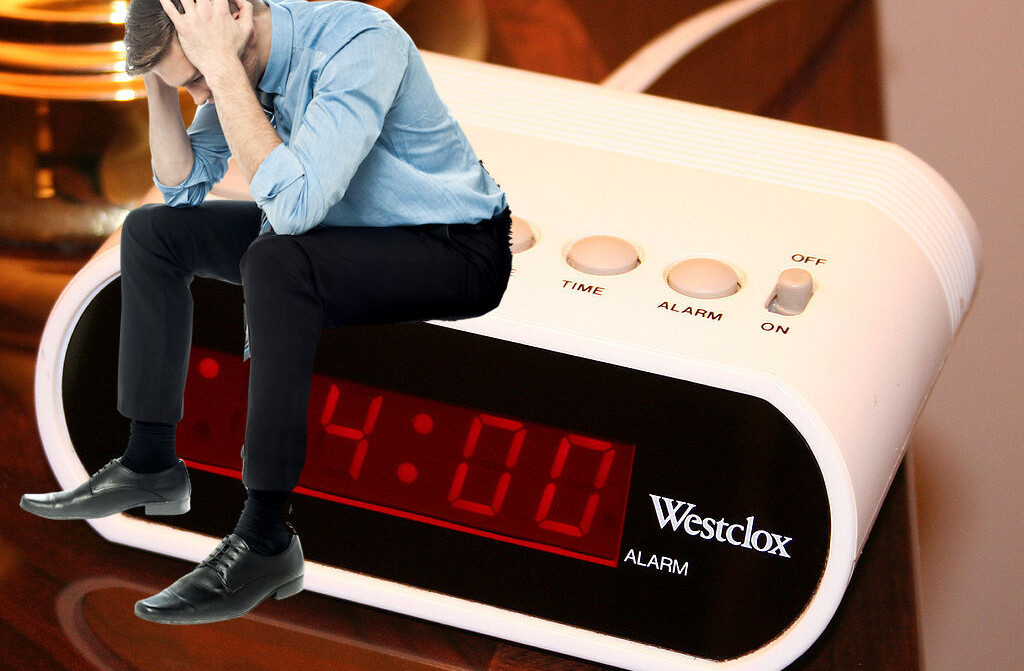
If you’re a regular reader, you’ve probably noticed that we’re looking at health and fitness this week, particularly through a technology lens. I won’t lie: I met this news with a groan. As Brad McCarty, fellow editor and my sole colleague in The Next Web’s Foes of Fitness club, said best: ‘feeling the burn’ is not our idea of a good time. We prefer to stay in shape by working our fingers over the Xbox controller.
But there are two aspects of my health that I take pretty seriously, primarily because they directly affect the quality and quantity of my work.
By no means am I a morning guy, but I’m pretty serious about getting a good night’s sleep, though that’s not to say that the freelancing life doesn’t frequently throw that idea in the bin. It is, however, the number one factor that determines whether I have a productive day or just bang my head against a wall. Martin Bryant wrote a great piece on technology that helps one improve their sleep.
The other is ergonomics. When I started my career as a writer I was pumping out sometimes up to 20,000 words a day, both to fill the void between the cost of living and the rates I was able to procure as an unknown quantity, and because at that point I still hated sleeping.
As you might imagine, it didn’t take long before my wrists were in agony after only a few minutes of typing at the start of each day. I was using fairly standard peripherals that wouldn’t do any harm to the average user, but at my level of usage, it was a stupid thing to ignore.
The following is my experience with ergonomic peripherals. Note that, as my own experience, this is anecdotal evidence and not based on studies. I don’t know what they say — I just know when my wrists hurt!
The Keyboard

In my experience, your keyboard is likely to make the most difference in an ergonomic setup. I’m sure this experience is biased because I’m a writer and my keyboard is my main controller, so if you’re a pro Counter-Strike player or use your mouse more, take this with a grain of salt.
My first ergonomic keyboard was the Microsoft Natural Ergonomic 4000. It was also my last — not because I’ve stopped using it, but because it works so well that I’ve not tried the alternatives.
I’ve been through three Natural Ergonomics over the last seven years. They’re not particularly fragile keyboards and should serve you for quite some time; it’s just that it took me a while to figure out that when drinking coffee at the desk, you should place your coffee mug as far from the keyboard as possible!
While the Natural Ergonomic is a great model, there are many other ergonomic keyboards out there. The Natural falls into the “split keyboard” category, the most common form factor, as there’s a gap in the center of the keyboard that allows each side to slope in a way that parallels the way we naturally rest our wrists.
Some people swear by the contoured keyboard, among which the Kinesis Advantage is king. I’ve not tried one but the fact you can put your thumbs to work in their resting position and thus take some of the workload off of your fingers may be attractive to some.
Mice

Ergonomic mice haven’t made a big difference for me in ongoing use. At times I’ve switched away from ergonomic products to gaming products and, when the pain returns, have switched the keyboard back in but not the mouse. In these instances, I find that my mousing hand takes a bit longer to recover than my left hand.
There’s likely to be some sort of psychological trickery at play in that situation, because if I switch a gaming mouse into my setup while retaining over ergonomic devices, it doesn’t make a difference, even months in.
The first ergonomic mouse I used was the Logitech MX Revolution. This model no longer seems to be in the Logitech product pages, but the Performance Mouse M950 looks pretty much identical. It’s comfortable to hold, that’s for sure.
I’ve been using my Razer Deathadder as a main mouse for almost a year now, and as a gaming mouse it’s definitely not made with ergonomics as a priority. After all this time I’m not experiencing pain, though I had the opposite experience after a brief stay in the ergonomic hell that is the Razer Lachesis before promptly returning it.
I might not be having issues with the Deathadder, but I certainly can’t deny that an ergonomic mouse feels more comfortable and less strenuous. Like I said earlier, if you use your mouse more than your keyboard, your experience will likely differ.
When it comes to mice there is one key thing that I’ve left out.
Wrist Rests

You can use an ergonomic mouse without a wrist rest and get along fine. Or, you can use any mouse you desire with one and get along just as well.
My Deathadder was brought home alongside one of the company’s wrist rests, and I was never a fan. I’ve gotten used to it now, but somehow resting my wrist on something that perfectly contoured to its shape didn’t agree with me for a long time.
I switched back and forth a number of times, indecisive as to whether I wanted to put up with the wrist rest or not. Eventually it became clear that the wrist rest was my key to using any mouse I wanted without any nasty pains. Every time I got rid of it but failed to get rid of the non-ergonomic mouse, they eventually returned.
Unfortunately for me, I’m out of a wrist rest right now. I may have learned my lesson with coffee, but it doesn’t mean I know any better with Coke!
Other Environmental Factors
There are other things to take into consideration if you find it’s not the type of keyboard or mouse you’re using that’s causing pain. Desk height compared to your chair’s height is a big factor. For eye and neck strain, you need to make sure you’re look directly in front at your monitor, not too far up or down.
Trying to find ergonomic perfection can be a costly exercise if you go all out, and it’s hard to say how many of these theories put forward about everything from your chair to your line of sight are marketing myths.
Some people call the benefits of ergonomic devices — for instance keyboards — a myth, and I don’t know if there’s any supporting literature for that claim. For me, the fact that a switch away from an ergonomic keyboard brings back the pain is proof enough.
Get the TNW newsletter
Get the most important tech news in your inbox each week.




